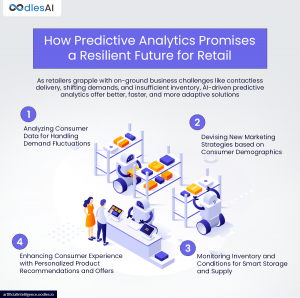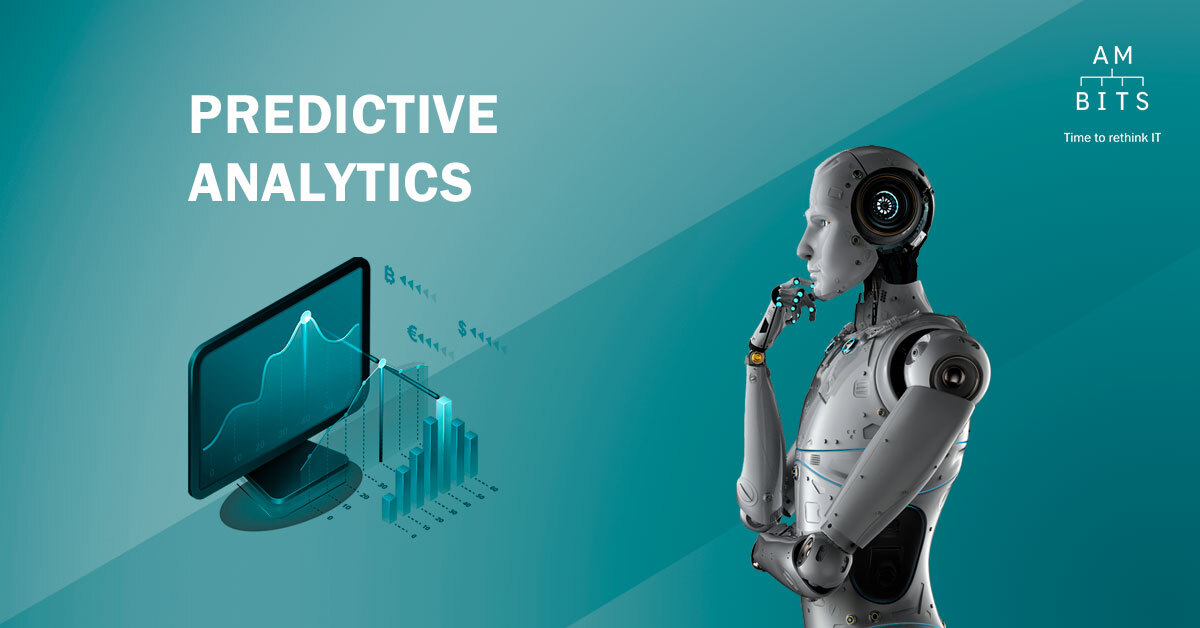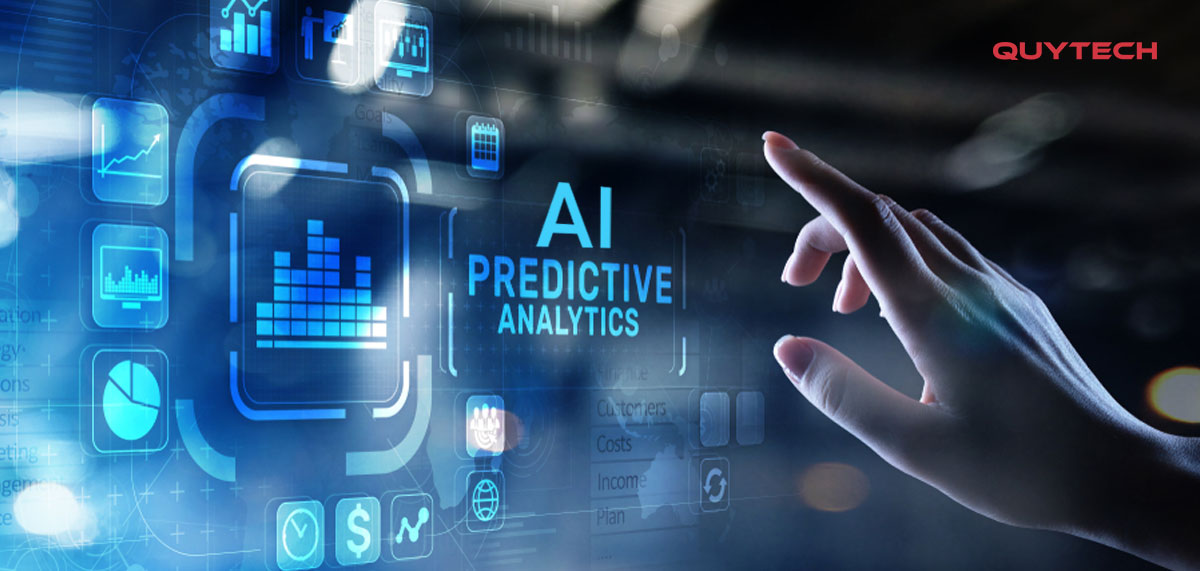
Predictive Analytics for Retail Using AI
Retail is a data-rich industry, with businesses generating terabytes of data every day. This data can be used to gain insights into customer behavior, identify trends, and make predictions about future sales. AI-powered predictive analytics can help retailers to make better decisions about everything from product assortment to pricing to marketing campaigns.
Benefits of Predictive Analytics for Retail

There are many benefits to using predictive analytics for retail, including:
- Increased sales: Predictive analytics can help retailers to identify the products that are most likely to sell, and to target their marketing efforts accordingly. This can lead to increased sales and profits.
- Improved customer experience: Predictive analytics can help retailers to provide a more personalized shopping experience for each customer. This can be done by suggesting products that are tailored to the customer's individual interests, or by sending targeted marketing messages.
- Reduced costs: Predictive analytics can help retailers to identify areas where they can save money, such as by reducing inventory levels or optimizing supply chains.
- Improved operational efficiency: Predictive analytics can help retailers to improve their operational efficiency by identifying areas where processes can be streamlined or automated.
How to Use Predictive Analytics for Retail

There are a number of ways that retailers can use predictive analytics to improve their business. Some of the most common applications include:
- Customer segmentation: Predictive analytics can be used to segment customers into different groups based on their interests, demographics, and purchase behavior. This information can then be used to develop targeted marketing campaigns and improve the customer experience.
- Product assortment optimization: Predictive analytics can help retailers to identify the products that are most likely to sell in each store location. This information can be used to optimize product assortments and maximize sales.
- Pricing optimization: Predictive analytics can help retailers to set prices that are most likely to maximize profits. This can be done by taking into account factors such as customer demand, competitor pricing, and product costs.
- Inventory management: Predictive analytics can help retailers to forecast demand and optimize inventory levels. This can help to reduce costs and improve customer service.
- Fraud detection: Predictive analytics can be used to identify fraudulent transactions and protect retailers from financial loss.
Tools and Technologies for Predictive Analytics

There are a number of tools and technologies that retailers can use to implement predictive analytics. Some of the most popular options include:
- Machine learning: Machine learning algorithms can be used to identify patterns in data and make predictions about future events.
- Natural language processing: Natural language processing (NLP) technologies can be used to analyze customer feedback and identify trends.
- Visualization tools: Visualization tools can be used to make data more accessible and easier to understand.
Challenges of Predictive Analytics for Retail

There are a number of challenges that retailers face when implementing predictive analytics. Some of the most common challenges include:
- Data quality: The quality of the data used for predictive analytics is critical to the success of the project. If the data is inaccurate or incomplete, the predictions will be inaccurate.
- Bias: Predictive analytics models can be biased if they are not trained on a representative dataset. This can lead to unfair or inaccurate predictions.
- Interpretation: The results of predictive analytics models can be difficult to interpret. This can make it difficult for retailers to make decisions based on the predictions.
Conclusion

Predictive analytics is a powerful tool that can help retailers to improve their business. However, it is important to be aware of the challenges involved in implementing predictive analytics. By addressing these challenges, retailers can reap the benefits of predictive analytics and achieve a competitive advantage.
Here are some specific examples of how retailers are using predictive analytics:
- Amazon: Amazon uses predictive analytics to recommend products to customers, personalize their shopping experience, and optimize its supply chain.
- Walmart: Walmart uses predictive analytics to forecast demand, manage inventory, and fight fraud.
- Target: Target used predictive analytics to identify pregnant customers and send them targeted marketing messages. This led to a significant increase in sales of baby products.
- Best Buy: Best Buy uses predictive analytics to identify customers who are likely to be interested in new products, and to target them with marketing campaigns.
- Nordstrom: Nordstrom uses predictive analytics to optimize its inventory levels and improve its customer service.

These are just a few examples of how retailers are using predictive analytics to improve their business. As the amount of data available to retailers continues to grow, predictive analytics is becoming an increasingly important tool for staying ahead of the competition.
Post a Comment